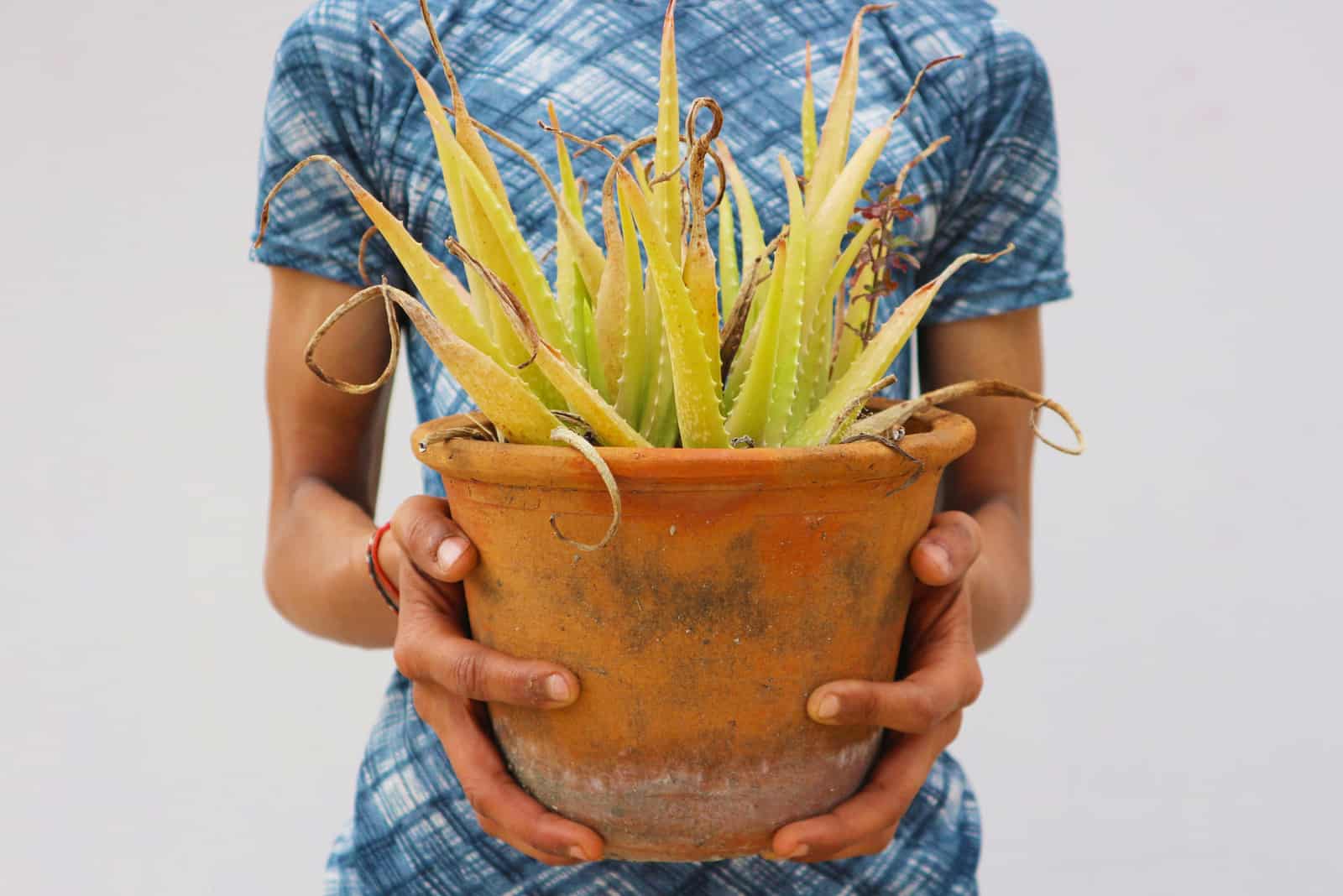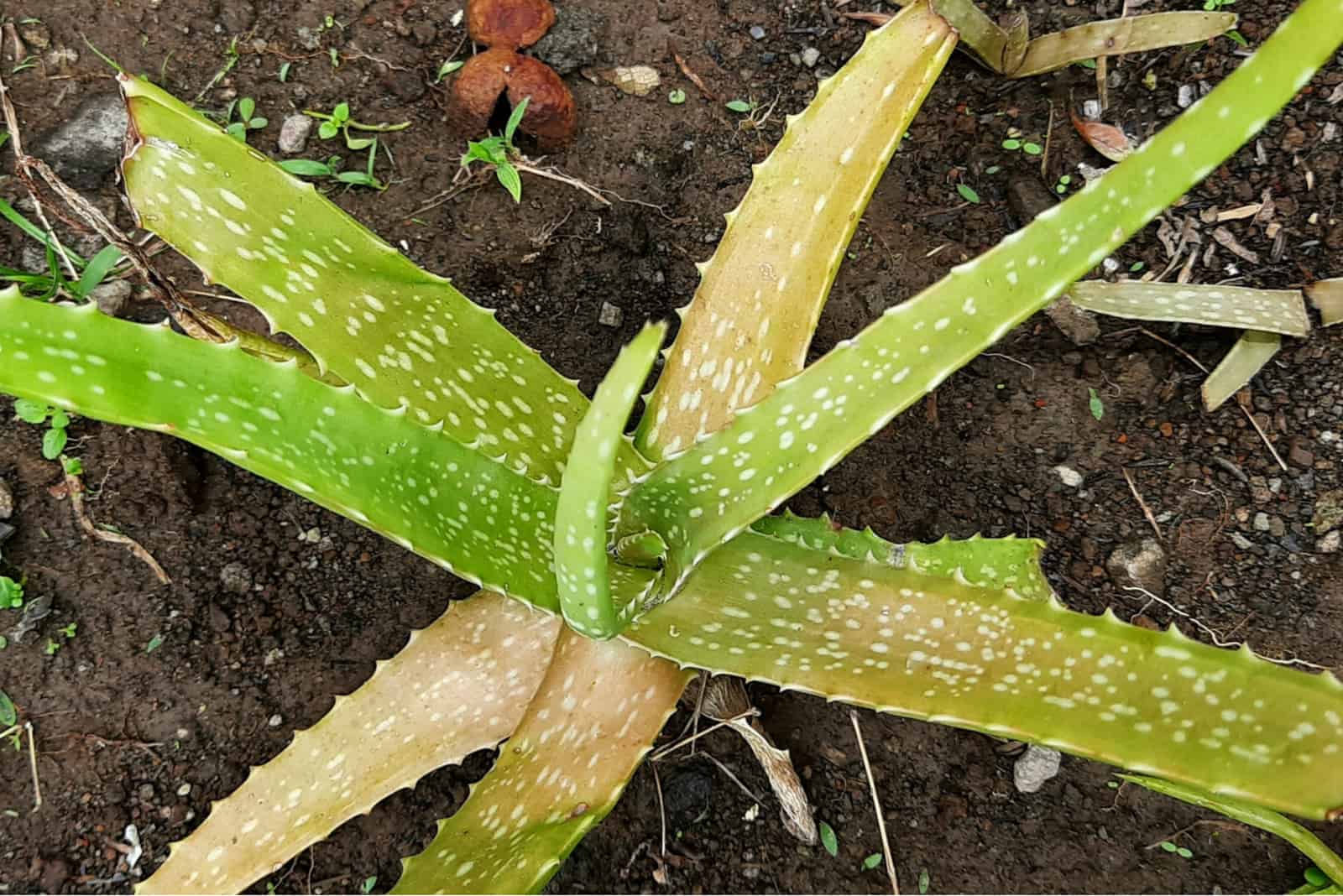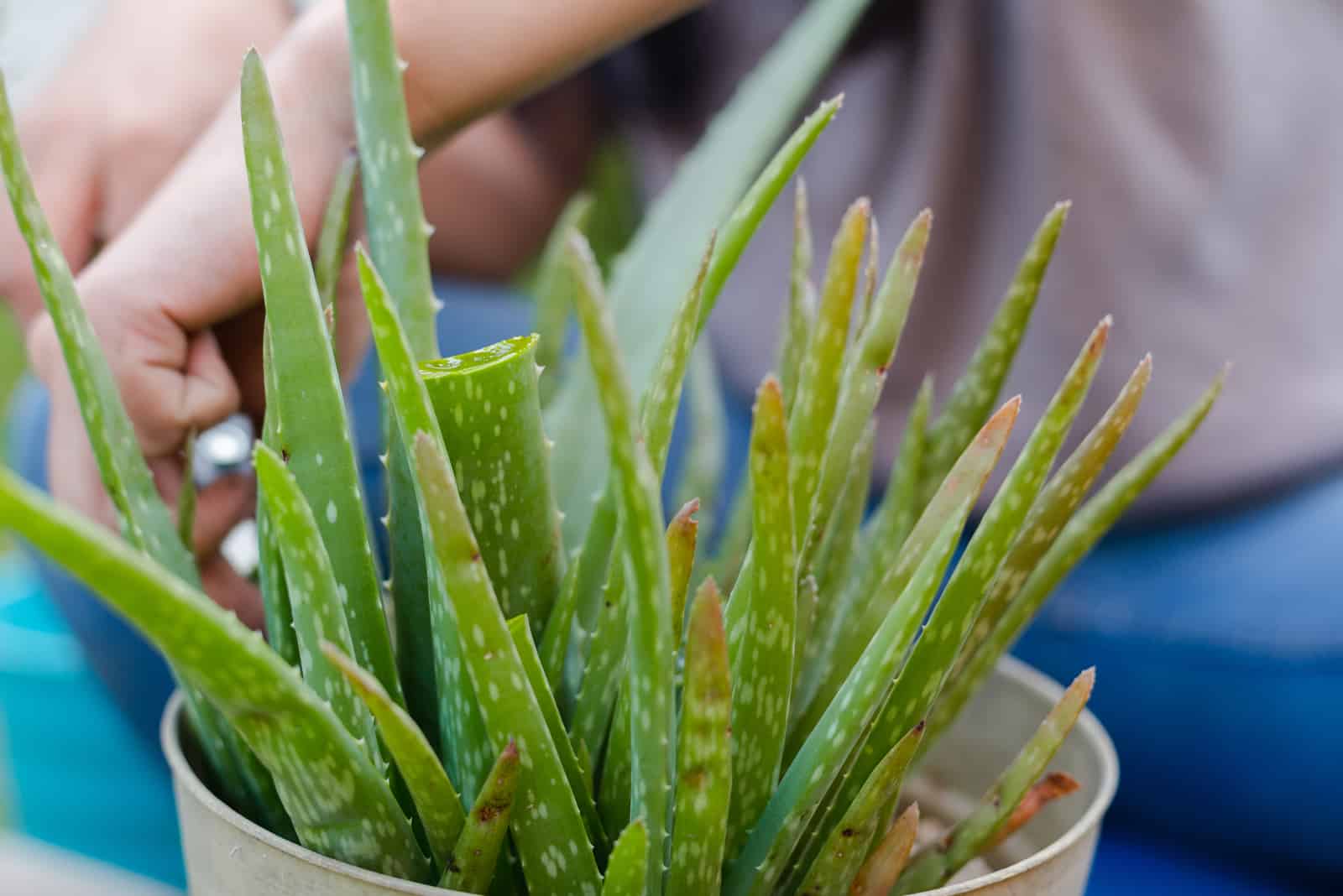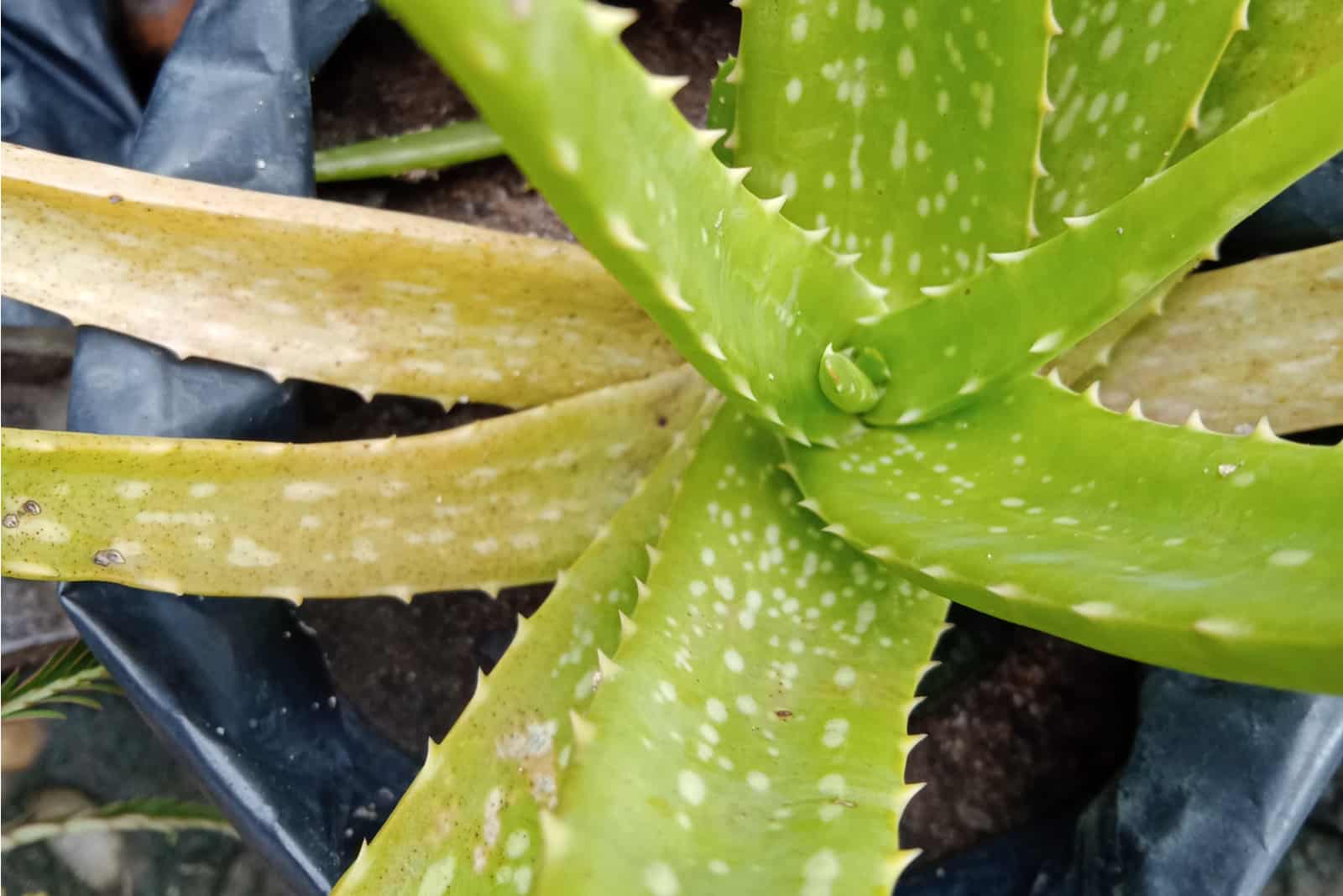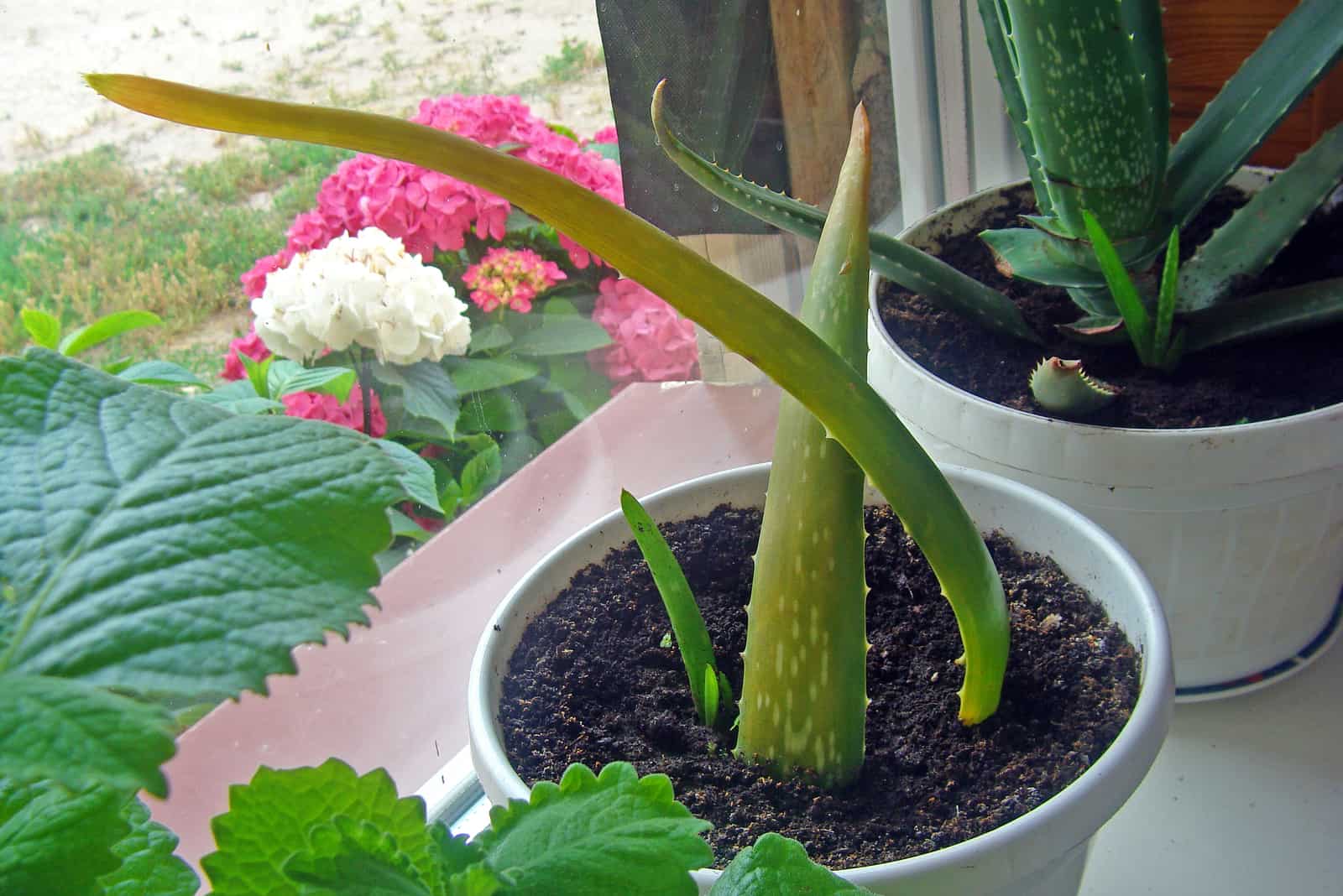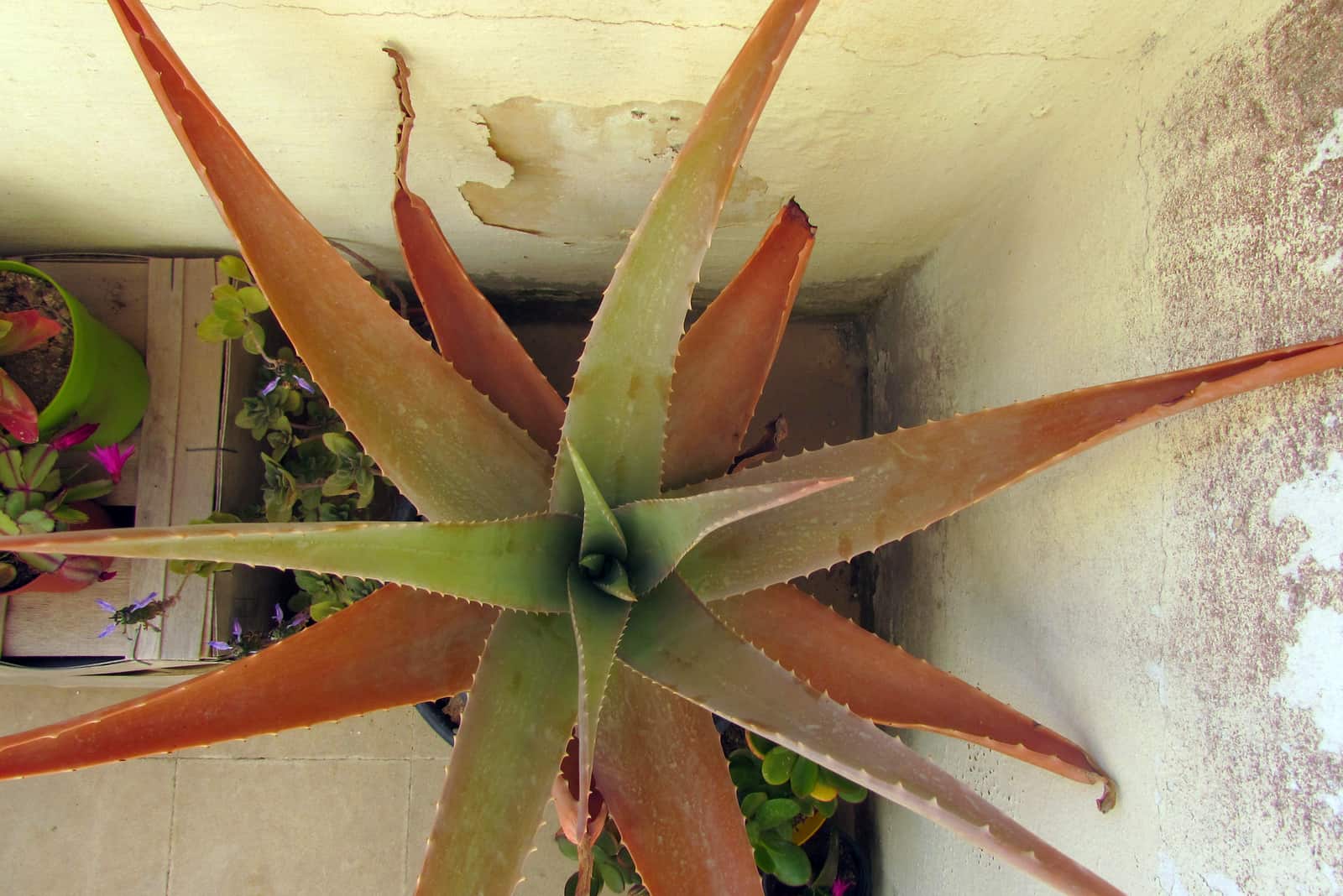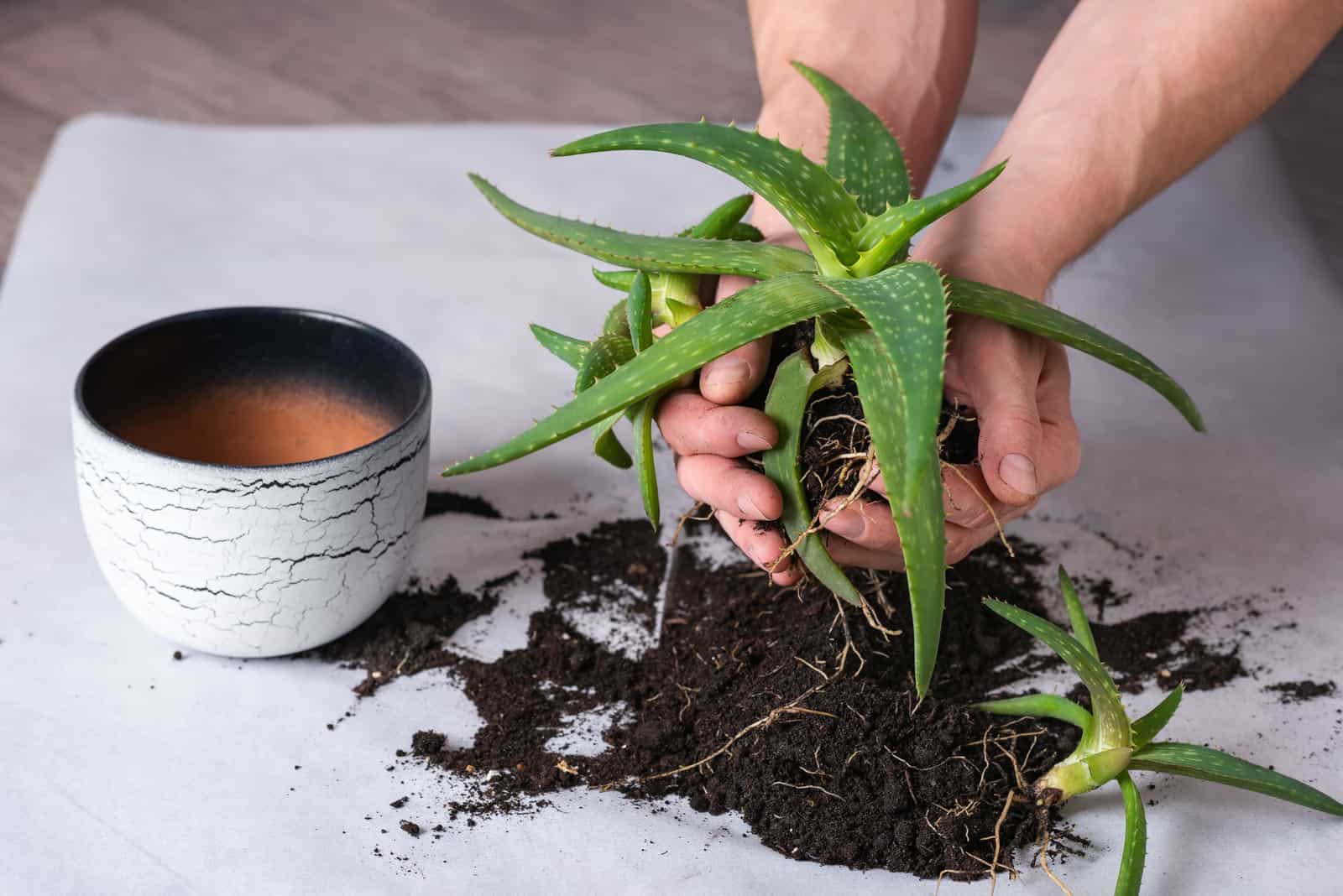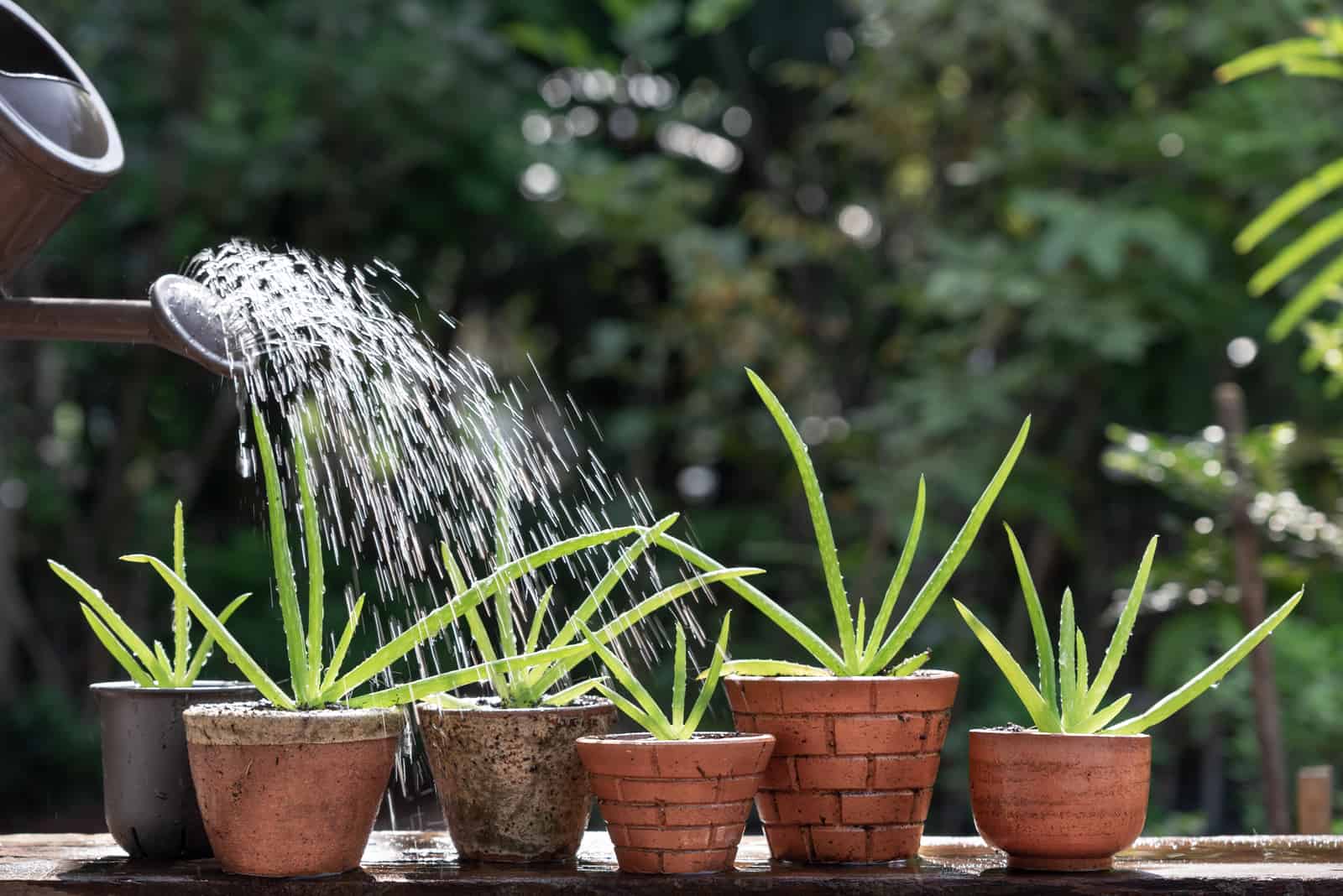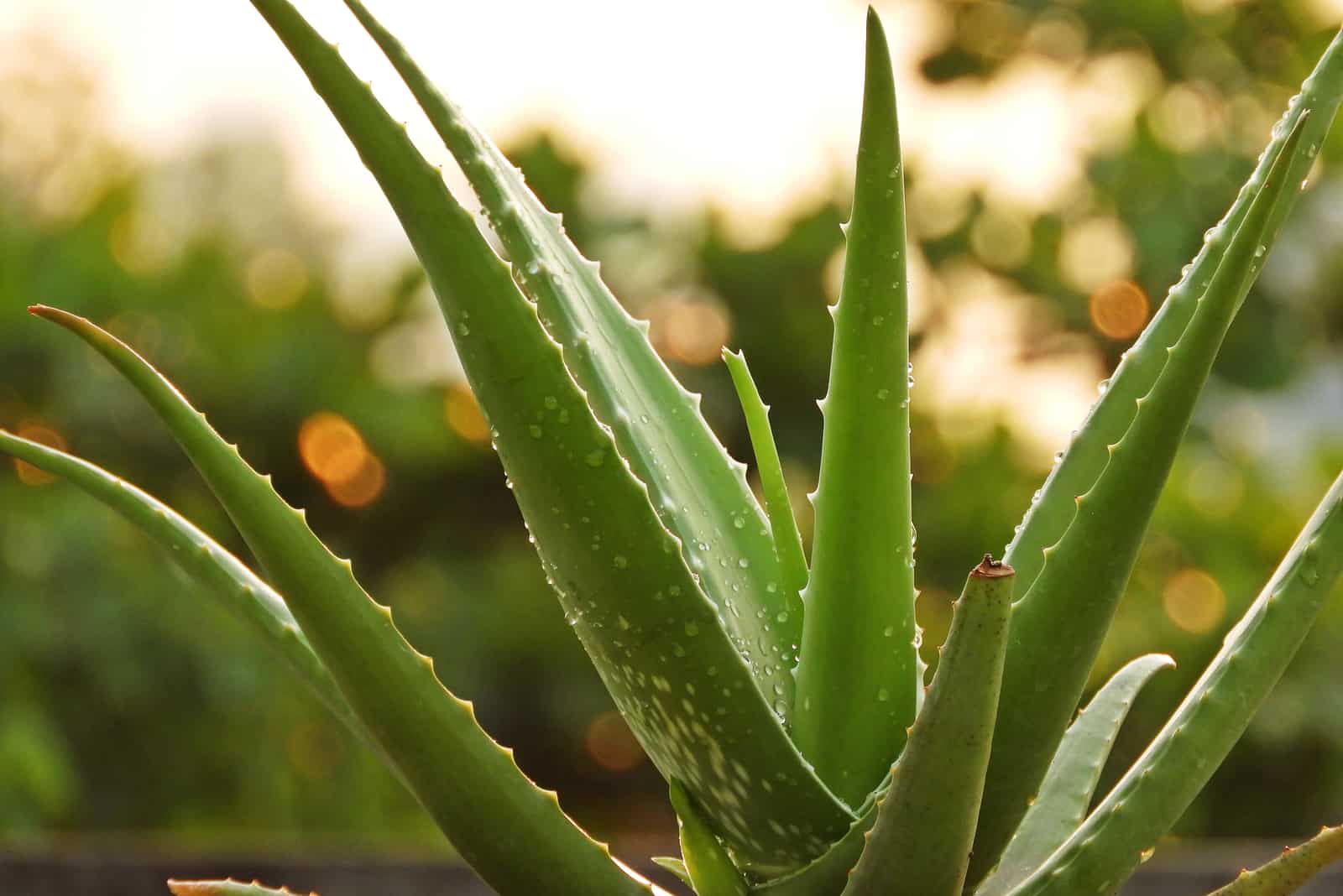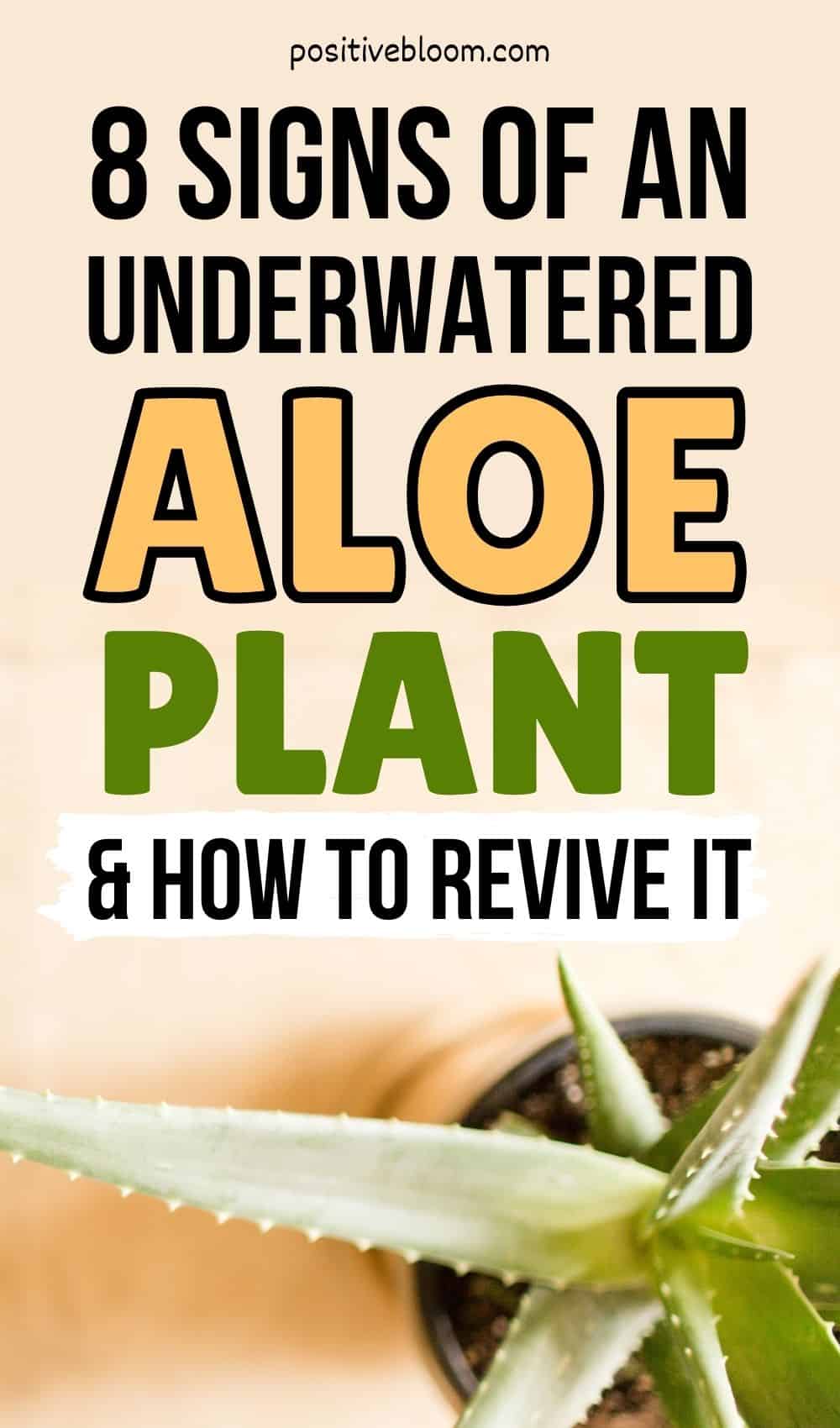Yes, you read the title correctly, the Aloe Plant can actually be underwatered!
People often think that Aloe plants can’t be underwatered due to their ability to retain water for such a long time.
These cacti-like succulents will make a great addition to your home decor.
If you notice any of the following signs, you must act immediately. The symptoms of an underwatered aloe plant include changes to the leaves, soil, and roots.
Let’s get into details so you can prevent this from happening.
8 Signs Of An Underwatered Aloe Plant
Before we move on, let’s take a look at the reasons an aloe can become dehydrated. The fleshy stems of an Aloe plant retain moisture for an extended period, but for how long?
The amount of water in the stems can decrease over time, causing damage to the plant. That is why it’s essential to observe the plant and check the moisture levels regularly. All types of Aloe plants, including Aloe humilis, are sensitive to underwatering.
Aloe cells lose water, which affects metabolic processes and damages physiological functions. That is the cause of the following issues.
1. Brown Tips On Aloe Leaves
Overfertilization is the most common cause of brown tips on the leaves. They look like they’re suffering from sunburn. But an underwatered aloe plant can also show these changes.
Water deficiency will affect leaf tips as they are the farthest from the stems, which means they are also furthest from the source of water.
It’s worth mentioning that this will be the first sign of dehydration on an aloe plant, as the tips are the last part of the Aloe to receive water.
Tips will first become dry, then shrivel, and eventually turn brown.
Without moisture, the leaf tips can’t survive.
2. Yellow Leaves
The cause of yellow leaves is mostly nutrient deficiency. Water helps nutrients from the soil to reach other parts of the plant. Without nutrients, photosynthesis can’t be performed.
It is hard to determine exactly which nutrient is lacking when the plant is underwatered. But when you notice yellow leaves, first check the water supply.
If you notice that older leaves have turned yellow, the plant most likely needs Natrium, Phosphorus, Potassium, or Magnesium.
On the other hand, younger yellow leaves lack Calcium, Iron, Copper, Magnesium, or Zinc.
If the plant is unable to photosynthesise, the aloe plant can’t produce chlorophyll, and the dark green leaves will turn yellow.
3. Dry Leaf Edges
If you observe your underwatered aloe plant, you may notice that the central part of the leaf is well moisturized, but the edges are very dry.
The edges have most likely lost water, so their cells die.
Generally, leaf edges don’t have much water and are thin. This means it’s easy for them to lose that amount of water, dry out, and become crisp.
4. Aloe Plant Wilting
Again, water loss affects plant cells, which leaves them loose. The aloe loses its crown shape in this case.
If there is no water in the plant cells, the aloe is unable to hold itself and, over time, bends and starts wilting.
To be honest, this is the worst case scenario for me as the Aloe’s shape is one of the most beautiful features of this houseplant.
5. Brown Spots On The Leaves
I’m sure you already know that brown spots can be caused by both overwatering and underwatering. So the question is, how to tell the difference?
Brown spots due to underwatering are dehydrated when you touch them. On the other hand, brown spots due to overwatering are soaked.
What are the spots? Brown spots are cells that die due to the lack of water.
6. Shriveling Roots
The job of the roots is to take the water from the soil to the other parts of the plant.
As mentioned, brown edges are the first thing you’ll notice on an underwatered Aloe plant, but the Aloe plant’s roots are the first to suffer.
When healthy roots suffer from a lack of water, they will try to find any water source in the root system.
If the dehydration continues, the bottom of the pot dries out, and the Aloe roots eventually start shriveling.
If you check the roots of an Aloe plant and they are dry to the touch, it’s time to rehydrate it.
7. Dry Potting Soil
This is probably the most obvious sign. Don’t confuse dry soil and soil mix ready for watering. If the plant is dehydrated, the entire soil will be dry, not only the upper part.
It’s essential to water the soil according to the watering schedule for this succulent plant as it stores water through its pores. Watering is crucial for soil moisture.
There is one more thing to take into consideration. The potting mix plays an essential role in the process of watering. For example, if the plant grows in sandy soil, the soil will be more susceptible to dehydration.
On the other hand, clay soil can retain moisture for a longer time. No matter how well both soils retain moisture, everything has its limits.
Aloe roots will not take up water from the soil due to a lack of water.
This may result in the effect we are all most afraid of, permanent wilting.
8. Curly Leaves
Leaf curling is a way the plants retain water for longer.
If transpiration occurs at a higher rate, aloe plants will save water by reducing the size of the leaves.
This is a vital mechanism as it fights water deficiency. Curling will reduce the surface area, but also shrink stomatal pores.
The reduced aloe leaves will decrease the need to replace transpired moisture.
If you don’t water the plant for an extended period, the aloe vera leaves will lose water after curling and drying.
Don’t ignore the signs as the plant might lose energy and end up with additional problems. Unfortunately, it won’t be possible to revive the plant after this.
Overwatering vs Underwatering
This is probably one of the most confusing things when it comes to plant care. Each plant has different needs, so we should pay a lot of attention to each condition we have to ensure.
One of the most essential conditions is watering. Although this plant needs less water compared to many other houseplants, you should leave it without water for a longer period.
To see if your plant has changed because of how you water it, look at the signs of overwatering on this table to compare the signs of and the difference between underwatered and overwatered Aloe Plant.
[table id=41 /]The Causes Of An Underwatered Aloe Vera Plant
Now, let’s see what causes an underwatered Aloe Plant.
Aloe Plant Isn’t Watered Regularly Enough.
Water is essential for any plant to grow healthily. Therefore, consistency when you are watering your Aloe Vera plant is key.
There are two common mistakes related to watering:
• We water the plants prematurely,
• We wait too long between waterings.
Every plant requires a watering schedule. Just stick to the watering schedule as much as possible to avoid any issues.
Bear in mind that plants lose water all the time, and that’s why we have to consider all the different conditions that may affect plant needs.
The plants can use a tiny percentage of the water they absorb.
Water Evaporates Fast.
Transpiration is the evaporation of water from plant tissues.
Water escapes from the stomatal pores on the surface of the leaves. Think of it as a kind of exit point.
As mentioned, succulent plants retain moisture for an extended period due to their fleshy stems and their ability to retain water.
Let’s look at the conditions that increase the transpiration rate (evaporation process):
• High temperatures
• Fast winds
• Low humidity levels
Soil Doesn’t Have The Capacity To Hold Water.
Aloe Vera potting mix should have good water holding capacity.
The texture of the soil affects the water holding capacity.
For succulent plants, a perfect potting mix should consist of:
• Perlite
• Bark
• Lava rock
The good thing is that ingredients create a porous structure that will improve aeration and drainage.
If the potting mix has a coarse structure, the water holding capacity reduces and creates problems with watering.
If you don’t supply the potting mix with water, it won’t meet the water requirements of the Aloe Vera plant.
Fertilizing Without Watering
We all want the best for our Aloe Vera plant. That’s probably the reason we pay so much attention to fertilization and choosing the right plant food.
If you apply fertilizer and don’t water the plant afterward, it will likely result in nitrogen toxicity.
Nitrogen toxicity can be easily avoided if you water consistently.
It’s tough for underwatered Aloe Vera plants to fight against nitrogen if they are supplied with too little water.
The best idea is to postpone fertilization as an Aloe Vera plant doesn’t need much fertilizer in general.
How To Revive An Underwatered Aloe Vera Plant
There are several different ways to rehydrate, and revive an underwatered Aloe Vera Plant. Bear in mind that the plant’s revival depends on the damage the plant has suffered.
Success is not guaranteed, but you should always try. If there is only partial damage, the plant has an excellent chance to recover. A dry plant will need more time to recover. There is always a worst-case scenario that the plant is unable to recover.
Follow the steps below to increase the chances of recovery.
Cut Off Affected Parts
Severely damaged parts of the Aloe Vera plant can only be removed. Unfortunately, they can’t recover.
Using sterilized pruning shears, cut off older dead leaves first. Prune them to the base.
You can leave Aloe Vera leaves with brown tips, brown spots, or edges if the damage isn’t severe.
Use New Potting Mix
The plant needs repotting. Use a new pot and new potting mix. What is considered as a good potting mix? It has to be well-draining soil and hold moisture.
Buy a pot with drainage holes so that you can see if the water drainage system is good enough.
A water drainage system follows this pattern: the water gradually dries between each watering. The soil presents the signs it needs to be watered. A good water drainage system prevents the water from being retained in the soil, which would only cause further damage.
Poor drainage systems can lead to many complications.
Choose The Right Pot Size
• Choose the right pot: The pot should not be too big because if there is more soil around the root system than there should be, the soil will retain excess water and become mushy.
• Pay attention to drainage holes: All excess water must be drained from the soil to avoid root rot. This will prevent root rot and create a safe environment to help your Aloe thrive.
• Large pots need more soil, so watering needs to be adjusted as there will be more soil all around the root system. In other words, watering should occur less frequently.
The air space in a soil’s potting mix should never be clogged with water. This will prevent oxygen from accessing the roots and destroy the entire system.
Old soil that has been contaminated should always be replaced with fresh soil to avoid further complications. Observe your plant to spot any changes and react in good time.
Find A New Place For The Aloe Vera Plant
Although I’m sure you placed your Aloe in the most aesthetically pleasing place possible for your home, this may not provide the environment it needs for healthy growth.
First, check the light level and see if that’s causing any problems.
Direct sunlight can damage the Aloe Plant’s leaves and cause sunburn or dry out the soil.
Choose indirect sunlight instead.
If possible, move the plant to a room with a window to get more indirect light and fresh air (try to imitate its natural surroundings).
If the Aloe is in a room with low light, its drainage system could be damaged.
Ensure it has enough light by moving the plant to a brighter and warmer place. Enough light will help the water drain effectively between each watering.
Adjust Watering
• Always check the soil moisture (use finger, wooden stick, or moisture meter).
• Use the watering can you would use for your other houseplants (avoid sink, bathtub, or similar places where the danger of excess water is increased).
• Filtered water or water left overnight is best, so the chemicals that could harm your plant can evaporate.
• Bear in mind that the leaves should not be watered. You can either choose bottom watering or water over the top of the soil. Water carefully, or you risk either overwatering or underwatering.
• The temperature during winter is lower, so it’s essential to remember that it will need less water than during summer (of course, you should always check the moisture level regardless).
• Don’t soak the entire plant, instead water over the top of the soil until it reaches approximately two inches below, or alternatively apply bottom watering.
• Soak gradually, don’t pour the entire prepared amount of water all at once, let the soil soak properly.
Watering Schedule
As mentioned, these succulents will need more time to dry out than other houseplants. It’s essential to give the plant enough water.
The watering schedule for the Aloe Vera plant often depends on the season, plant size, material of the pot, and where the plant is kept.
During warmer seasons, the Aloe Vera plant has to be watered more often because of the fast evaporation of moisture.
During colder seasons you can postpone watering, but always check the moisture level in the soil to avoid overwatering or underwatering.
The size of the plant also matters. Younger Aloe Vera plants won’t need much water. As they mature, increase the watering rate.
If you keep your Aloe Vera plant in a terracotta pot, it will be harder to overwater so you should water it more often.
If the pot is made of plastic, it will retain moisture longer and underwatering will be easier to avoid.
Outdoor Aloe Vera plants need more water than indoor plants as you can control the conditions in your home.
48 Hour Rule
There is a quick way to revive an underwatered Aloe plant if it hasn’t suffered severe damage.
You will need a bowl or glass filled with purified water. Immerse the Aloe roots and wait for two days.
When 48 hours have passed, check the plant to see if there has been any improvement.
The leaves should turn green, and then it’s time for repotting.
Here’s a video on how to care for your Aloe plant:
Wrapping Up
I know how hard it can be to see something wrong with your beloved Aloe Vera plant.
There are many signs of an underwatered aloe plant.
Now that you know them, you can easily identify which one your Aloe plant has and then try to fix it using the methods we provided in this article.
Until next time!
Like this post? Share of pin it for later!

